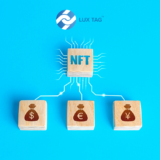Track & Trace System and the Blockchain Technology: Main Challenges and Benefits

First appeared on LuxTag.io
The term Track & Trace (hereinafter the T&T) has always been closely tied to the primary understanding of the supply chain process, as it means the ability to determine the exact point of where the item is currently located on its way to the final destination.
n our previous articles, we have discussed some of the key blockchain features that ease modern logistics and make the process of delivering any goods faster and more secure. We mentioned the main challenges of the digitization of the supply chain, took a look at the problem of counterfeiting in a jewelry market, explored the opportunities of implementing blockchain in the pharmaceutical industry, and talked about the issues related to buying products online. In most of these write-ups, we claim that the blockchain-built Track & Trace solution is able to help not only producers but also consumers to get rid of all the worries of dealing with fake products. However, we have not really dig into the topic.
In this article, we are going to share with you how the blockchain technology may revolutionalize the existing global system of tracking and tracing all the manipulations with the products on their way to the big world, allowing essential data to be immutably recorded from the top to the bottom of the supply chain.
Blockchain and Track & Trace
Initially, Blockchain wasn’t thought to be a solution for logistics tracking, because it was developed as a radically transparent, distributed ledger with a focus on handling financial accounting in a public manner. Moreover, there are many other technology options created specifically for managing supply chains in different industries.
However, Blockchain has proved to be an ideal technology for building a connected record of a supply chain and the provenance of individual items. This is because the core idea of Blockchain allows multiple parties to enter and retrieve data (update records) in an append-only way. It means that it is only possible to add data points chronologically over time, and the past records can’t be modified or removed. This is particularly relevant if you want to represent the life cycle of an item over time in a secure manner. Even if there is no complete trust between parties (manufacturer, delivery man, or distributor), each of them can be sure that received data is authentic thanks to the transparency of the blockchain technology.

Benefits of the Blockchain implementation in T&T
To elaborate on the benefits of Blockchain in T&T, here are four main points to prove the potential success of the idea of using such technologies in logistics:
- The Blockchain is immutable – which is a fancy computer science way of saying “can’t be changed.” The digital certification stays with the item until the point of its consumption when it ceases to exist.
- The provenance of the product is guaranteed. The immutability of the item means it cannot be duplicated, counterfeited, or tampered with. If so, the system will immediately recognize a replacement or fake and report an error.
- Joint data entry and ledger-keeping allow maintaining a “shared database ledger” (the blockchain-powered database), which can ideally run outside of the merits of a confined organization. We can talk about ecosystems, where multiple stakeholders feed and pull data from the Blockchain-powered T&T system without relying on one central party to operate it.
- Finally, because Blockchain allows data to be entered, shared, and viewed across the supply chain, its journey from the production line to consumption is transparent and visible.
Challenges of using Blockchain in T&T
Although blockchain technology is successfully conquering the market, it still may face many challenges not only on its way to being implemented but also during the period of utilization. There are lots of people in every industry who are not confident yet with using pioneering innovative products (First-Mover Fair). Thereby there is a chance that blockchain-built solutions will be skipped explicitly due to its relative novelty.
The truth is, the world is not ready for genuinely ecosystemic, symbiotic, collaborative, pan-organizational data-sharing environments. At the moment, the benefits of Blockchain technology mostly exclude the aforementioned third point whereby the sacrifice of independence allows technological leapfrogging spearheaded by the organization which deploys, implements, and operates a blockchain solution.
It is then required to onboard the stakeholders to connect to the system, usually, through various public internet channels, and diverse interaction methods, which can be indicated as specialized devices, mainstream (smartphone) client devices, and an array of IoT sensors, actors, and tags. However, producers can easily face the problem of onboarding the external parties of the supply chain: from outside logistics companies to partnering retail stores.
Organizations that deploy a blockchain-enhanced Track & Trace solution these days leverage on the limited benefits of Blockchain technology, as in “not to its full capability.” This still brings certain benefits to their partners and companies themselves – and at this moment, it inevitably creates added value. That then reflects in valuation as well as perceived brand value due to the use of the “newest and bestest” high-tech, to provide their clients with an unmatched level of service quality offerings.
LuxTag’s Track & Trace Solution for the supply chain management
If you have been following LuxTag’s story, you must know that Track & Trace is one of the core features of our solutions we have been working on. Our blockchain-powered product tagging solution enables businesses to diminish challenges and problems that may emerge during the distribution process.
Tagging products on the blockchain means that an authentic record and proof of true ownership can be secured throughout the whole logistics operations that happened with an item. For businesses, this means that any products made can be tagged and therefore traced, thus eliminating counterfeit products and finding out the most popular destinations for replacing the origins with counterfeit and then spreading non-authentic goods. Besides, customers can check whether an item is real or not, and who is the original owner of an item. This can discourage theft of items tagged on the blockchain.
Furthermore, items tagged with QR codes or NFC tags can be tracked during logistics, enabling businesses to streamline their operations and customers to track the location of their purchases for delivery. LuxTag also provides business insights to manufacturers regarding their product ownership, usage, and resale.

Summing up, to obtain the most substantial benefit from any Track & Trace system, blockchain-powered or not, brand owners need participants who handle the items to be on board the whole way from the starting to the ending point. Ideally, every step in the process, including manufacturing, manipulations, and transportation (both in-house and external hand-overs), needs to be tracked as well as processed for storing information that stems from it. Only then the item can indeed be traced, and its provenance record will have the full value. It will mean that the product is completely traceable back to its origins with no gaps in its life history.
Any existing Track & Trace system has a degree of prone-to-error, and in most cases, it is still impossible to achieve the full potential mentioned above. As such, there’s usually space for interference. The chance of the possible error radically increases with the number of blind spots and non-captured interactions with an item. Looking at the downstream supply chain of products “from farm to fork”, the amount of handling entities is usually less, and it is more comfortable to control, easier to convince joined parties towards participation than in the case of upstream suppliers. Varying by industry, the number of participants and their incentive to play along, or penalties for non-compliance, are the crux of a well-functioning Track & Trace system.
Blockchain has the power to aggregate and handle multiple data points from various manufacturers of components and parts as well as all the logistics towards a factory, the manufacturing process, the quality check, and then the logistics with all its cogs and lastly, the distribution channels and the customer. It may even include a degree of customer engagement.
However, as in all emerging technologies which seek successful adoption, Blockchain for Track & Trace needs to stick to the reachable output, which in most cases is a downstream supply chain – Distribution Channel and Logistics Track & Trace.
Previous Articles about LuxTag
LuxTag Being Claimed as the First Patented Blockchain Project in Malaysia









